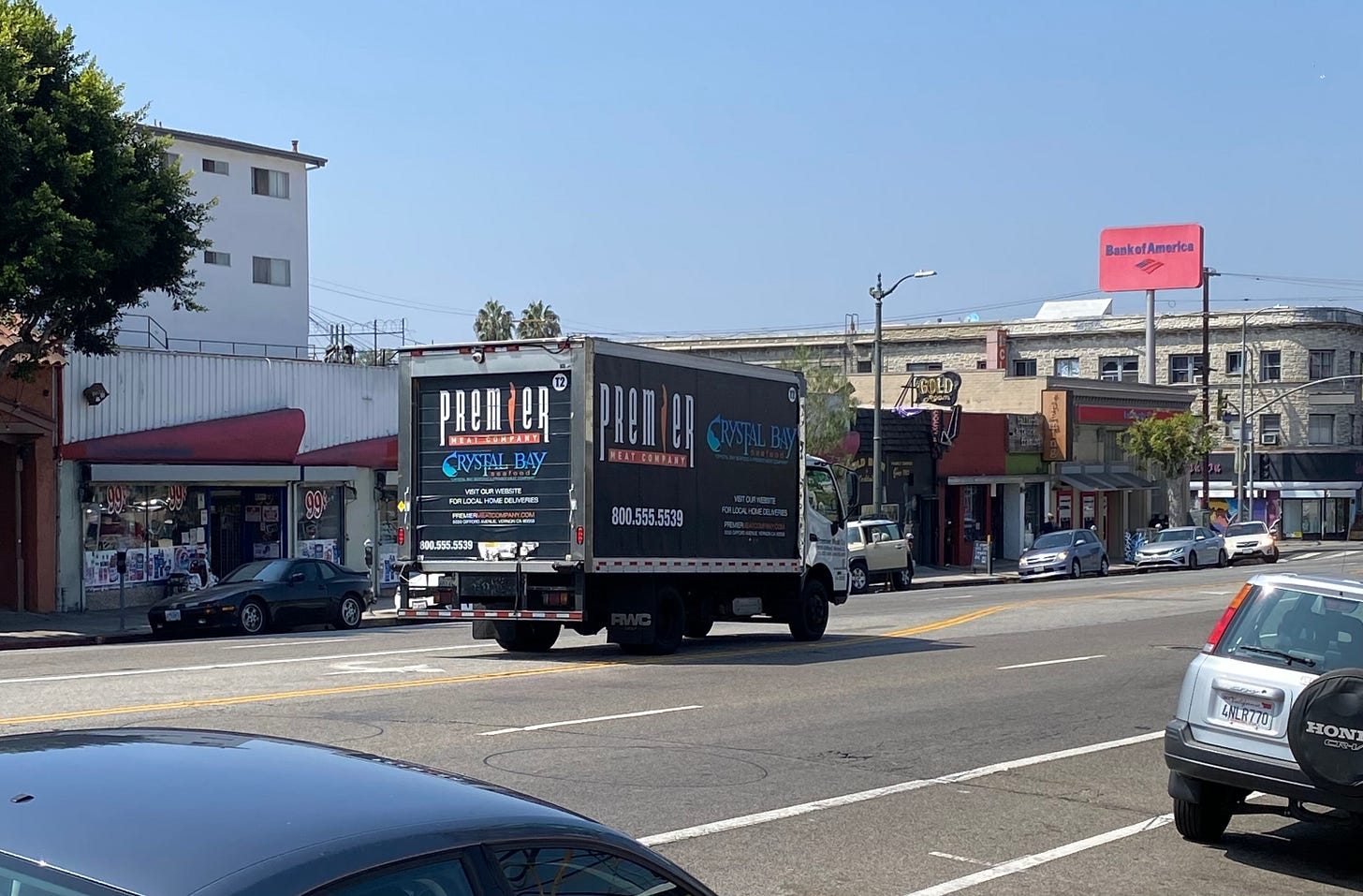Su$tainable Mobility, Volume 10
This newsletter aims to separate the signal from the noise for making money in all things sustainable transportation: Electrification, mode shift, active and public transit, and mobility aggregation, across both people and goods movement.
Su$tainable Mobility will be taking a break for 3 weeks in October due to travel. Instead, I will be organizing some mobility meetups in Paris (Oct 20) and Brussels (Oct 21). Send me a message if you want to join us!
This week, we have a Deep Dive on microfactories.
Disclaimer: This newsletter represents my own thoughts and not those of any employer. I will always disclose when I have a financial relationship with a company cited.
QUICK HITS: Fast takes on notable news from last week
🚶🏾♂️California may be on the verge of making it legal to cross the street. This LA Times editorial is a good follow-up to last week’s Deep Dive. Let’s hope that California Governor Newsom signs the bill.
⚡️ GM to begin fixing Chevrolet Bolts next month. These types of systemic-level recalls are going to be a part of our future. We’ll manage.
🔋 Daimler joined Stellantis’ battery consortium. This is a shot in the arm for Stellantis, Total/Saft, and the overall European battery market.
💰New York’s Metropolitan Transportation Authority (MTA) began public outreach on congestion pricing and the list of exemption seekers is long. Midtown residents and police officers want to be exempt from congestion fees to drive into Manhattan, but that drives up the price for everyone else. A fascinating case of economics versus local political influence.
🚛 In logistics, New York took steps to improve worker conditions for food delivery apps and California took steps to improve conditions for warehouse workers (aka Amazon employees). Working conditions and pay for those in mobility and logistics are going to be a hot-button topic for years to come, damping investor enthusiasm for startups with questionable labor models.
🔋 CATL to start production of sodium-ion batteries next year. There’s growing evidence that China Inc. will put its weight behind this technology to provide a rival to the dominant lithium-ion chemistry.
🚕 Uber offered up a few nuggets on sustainability commitments as it inched closer to actual profitability. There’s a dichotomy here between Uber’s rapidly growing food delivery business and ridehail business. Food delivery in Europe is dominated by bikes and scooters, versus the US, where cars still dominate. In ridehail, cars dominate globally. That makes it harder to make global commitments for sustainable food delivery.
🚲 In LA, the Bird app now includes Metro Bike Share bike availability. This is a great first step, but still not seamless, as the user gets booted out of the Bird app and must download the BCycle app in order to consummate the transaction.
🏔 An editor of The Economist argues we’ve already hit “peak car”. There’s a lot of noise in the marketplace right with COVID impacts and chip shortages, but my read is still that the appetite for car ownership in countries with growing middle classes (e.g., Brazil, India, Morocco, Indonesia, etc) is still too strong to counteract other forces, at least for now.
STARTUP WATCH: Sustainable mobility startups (generally pre-seed or seed) to keep an eye on
🚌 GogoBus (India): FlixBus for India
🏍 Pave Motors (New York, USA): 2-wheel EV using blockchain tech to help users share their bike
🛴 Scootility (Canda): Utility scooter manufacturer
🚛 Sunswap (UK): Hardware for zero-emission Transport Refrigeration Units (TRUs)
☁️ Vonzu (Spain): Supply chain orchestration software for last-mile logistics
DEEP DIVE: Microfactories
Pity the EV startup that tries to re-write the rules of automotive manufacturing.
Tesla challenged the industry’s approach on vehicle engineering and won. Nearly every car company privately admits that Tesla is few years of everyone else when it comes to items like software integration and powertrain.
But the same can’t be said of Tesla’s approach to manufacturing. Tesla attempted to rewrite automotive manufacturing, with a nearly people-free environment where robots were to assembly vehicles so quickly that air resistance would be a challenge. The result was Tesla’s notorious “production hell”, much of which involved redesigning production to apply conventional rules of auto manufacturing, including adding more people back into the mix. Even today, Tesla vehicles often lag the competition in build quality.
These rules of manufacturing are daunting for any EV startup, especially if they bypass contract manufacturing (Volume 4). A typical factory includes four workshops: stamping, welding, paint, and assembly. The cost of a new factory is at least $1 billion, with the paint shop costing at least $500 million. The prototypical factory produces 100,000-300,000 units per year with a few thousand local employees.
This creates a number of unintended consequences, including in communities. Local governments bend over backwards to attract car factories, dazzled by both the absolute job numbers (and jobs multiplier with local suppliers) as well as the high wages that manufacturing commands. Down the line, this creates economic overreliance on one employer to keep the local economy healthy. Success for the mayor of Lordstown, Ohio, for example, is tied to the success of one enterprise.
But a number of EV startups are aiming to re-write the rules of manufacturing, including Arrival and Local Motors.
Arrival’s approach is based on a number of factors, from improved robotics and automation, as well as using innovative vehicle materials like thermoplastic instead of steel and aluminum to avoid the ever-expensive paint and stamping workshops. Arrival claims that its South Carolina factory will cost less than $50 million, employ 240 people, occupy around 20k square meters, and produce about 10k vans per year. Compare that to a traditional auto factory, which is closer to 240k square meters and 3,800 employees.
Each individual element Arrival has shared publicly has arguably been tried before; the Citroën Méhari, for example, also used thermoplastic. So Arrival’s approach will require its results to be greater than the sum of its parts and create a new, more sustainable model for local automotive manufacturing.


